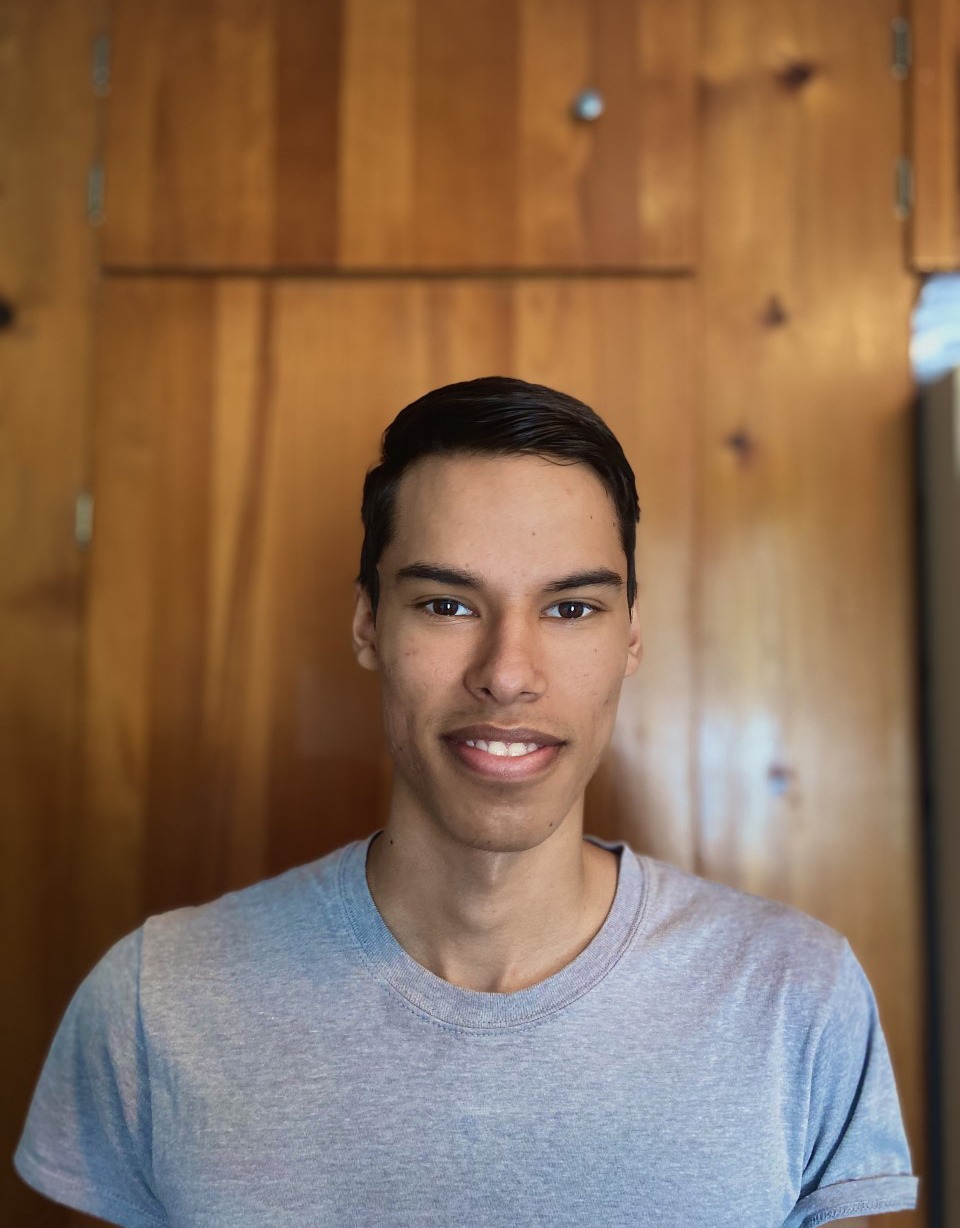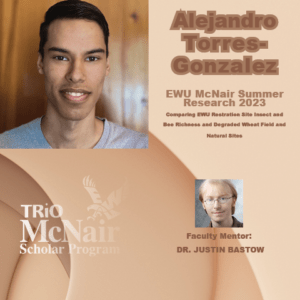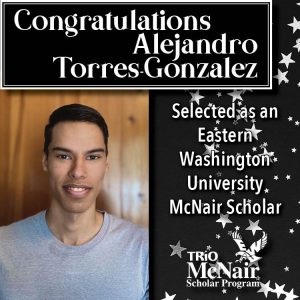
Alejandro Torres obtained his associate of Arts and Science degree from Wenatchee Valley College in 2021, before transferring to Eastern Washington University for his Biology degree. His research interests are botany, restoration ecology, and conservation. In the fall of 2022, he was offered the opportunity to volunteer with Dr. Rebecca Brown and Chris Bonsignore of Ducks Unlimited in a day of field research. Chris Bonsignore of Ducks Unlimited in a day of field research. He worked on delineating transects created at Schlepp Eastmont, ID to record plant species diversity, with the goal of surveying riparian vegetation effected by the overgrowth of Typha species. This research gave him experience working with field equipment such as measuring tapes and waders, he also learned the importance of restoration in mitigating loss of biodiversity.
In January 2023, Alejandro was selected as an EWU McNair Scholar with the goal to obtain his PhD. His research began in the spring of 2023 with mentor Dr. Justin Bastow focusing on the EWU Restoration project. He focused on observing the effects of ecosystem restoration on insect, and bee, abundance and richness. Alejandro hopes his research will help provide more knowledge in insect restoration while providing him with experience for applying to future positions in restoration and conservation organizations.
2023 EWU Faculty Research Mentor: Dr. Justin Bastow
Research Title: "Comparing EWU Restoration Site Insect and Bee Richness and Abundance to Degraded Wheat Field and Natural Sites"
Abstract: The degradation of Palouse prairie and grassland ecosystems produced a loss of insect richness and abundance. At Eastern Washington University a restoration plan began 2 years ago to return 120 acres of the endangered Palouse Prairie ecoregion, which has experienced a loss of 99.9% of its original range. With a majority of intact prairie habitat being fragmented and reduced in size, available data on insect and pollinator populations is limited and difficult to conduct. The prospect of the EWU restoration site provided temporal research on insect and pollinator population shifts as natural vegetation and soil composition is altered to replicate prior Palouse prairie habitat. The alteration of crop land to natural area additionally allows for the comparison of population community shifts based on ecosystem dynamics. In this experiment three treatment sites were compared, a wheat field, EWU restoration site, and natural intact grassland habitat. The collection of insects occurred using bee bowls which were painted yellow, blue, and white. Bee bowls of each color were implemented at each site for 24 hrs., after which all samples were collected and returned to the lab where identification occurred. The results concluded significant difference in the abundance and richness of insects at natural sites compared to both wheat field and restoration sites. The data revelated that significant differences occurred between all three sites based on treatment and month.



